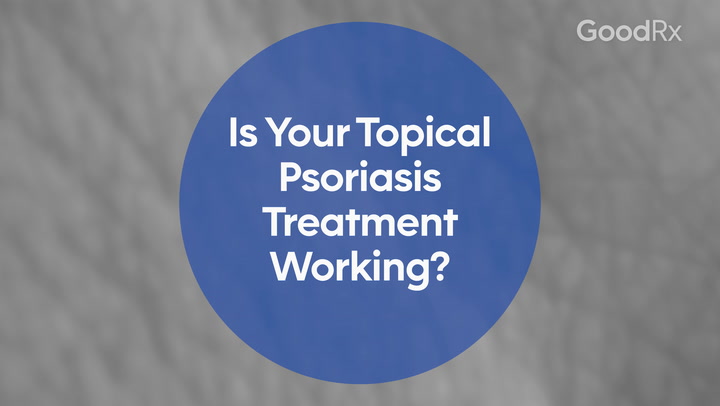
9 Effects of Long-Term Corticosteroids and Prednisone You Should Know About
Key takeaways:
Corticosteroids — like prednisone — can have serious long-term side effects. This is especially true when someone takes them for a long time or at a higher dose.
Examples of corticosteroids side effects include weight gain, osteoporosis, eye problems, and increased infection risk.
Corticosteroids you take by mouth are more likely to cause side effects than corticosteroids in a skin cream, nasal spray, or inhaler.

Corticosteroids, like prednisone, are a group of medications that can quickly relieve pain, itching, swelling, and other symptoms of inflammation. But their effectiveness comes with a price. They can lead to a number of negative side effects, especially when used long term (around 30 days or more).
If you have a condition that requires daily steroids, it helps to know what their long-term side effects are and when they start to kick in. This way, you can figure out if you’re at risk and how to prevent them.
What are corticosteroids, and how do they work?
Corticosteroids are medications that act a lot like cortisol, a hormone the body releases when you’re injured or stressed. Cortisol and corticosteroids work to calm the immune system, reduce swelling, and decrease pain.
Corticosteroids come in several forms, including:
IV (intravenous) infusion (a medicine infused into the bloodstream)
Injection into a muscle
Injection into a joint
Oral pills or liquids (taken by mouth)
Nasal sprays
Breathing inhalers
Eye or ear drops
Skin creams and ointments
“Local” applications — like sprays, inhalers, drops, and creams — only affect the body area where you apply the medication. So these have very few side effects.
Read more like this
Explore these related articles, suggested for readers like you.
But corticosteroids that you inject or swallow (pills, liquids) affect your whole body. These can cause more side effects — especially if you take them for a long time. Common examples of corticosteroid pills or liquids include prednisone and methylprednisolone (Medrol).
What is considered long-term corticosteroid use?
There’s no official definition. But over 30 days is generally considered long-term steroid use. Most often, oral corticosteroids are prescribed for roughly 1 to 2 weeks — and only for very severe symptoms. But for certain chronic health conditions, such as rheumatoid arthritis, corticosteroids may be necessary for months or even years.
The longer you take steroids, the more likely it’s that you’ll have side effects. And oral corticosteroids like prednisone are much more likely than local corticosteroids to cause these side effects.
What are the most common long-term corticosteroids side effects?
Since oral corticosteroids affect the whole body, they can have many different side effects. The risk of these side effects increases with higher doses and longer periods of use.
Although one study found that even short-term use of moderate corticosteroid doses may slightly increase the risk for serious complications — like bone fractures, blood clots, and sepsis. Long-term use of corticosteroids can cause an even wider range of side effects, even at lower doses.
Here are nine possible side effects of long-term corticosteroid use.
1. Weight gain
Weight gain is the most commonly reported side effect of long-term corticosteroids. In a large study of people taking corticosteroids for at least 2 months, 70% reported weight gain as a side effect.
This is probably due to the way steroids can:
Increase appetite
Change the way the body processes sugar and fat
Cause fluid retention
Dosing is also an important factor. People taking very low doses of corticosteroids (like prednisone 5 mg or less) don’t seem to be at risk for this side effect.
2. Osteoporosis and fractures
Corticosteroid use increases the risk of osteoporosis, which weakens the bones. In turn, this increases the risk for bone fractures. This risk seems to be highest in older adults who take high doses for longer periods of time.
For this reason, it’s recommended that you get a baseline bone mineral density measurement if:
You will be taking an oral corticosteroid at a higher dose (like prednisone 20 mg or more) for longer than 1 month.
You are over 40 years old and will be taking corticosteroids for 3 months or more at any dose.
3. Infection risk
Corticosteroids decrease inflammation by dampening the immune system. This can also make you more vulnerable to infections. This increase in infections occurs with both high-dose corticosteroids (more than prednisone 10 mg) as well as long-term use (over 1 year).
4. Cataracts and glaucoma
Both oral corticosteroids and local corticosteroid eye drops can lead to cataracts and glaucoma. There seems to be an increased risk of cataracts with very long-term use (around 1 year or more), even with low doses. The risk for glaucoma increases faster, and early signs of the condition can start within 3 to 6 weeks of use.
5. High blood pressure and heart disease
Corticosteroids have been linked to high blood pressure. This seems to be more likely if you take higher doses of prednisone over a long period of time. More research is needed on how long-term corticosteroid use affects the heart and the risk of heart disease in the long term.
6. Blood sugar
Blood sugar (glucose) can increase within hours of taking a corticosteroid. This side effect seems more related to the corticosteroid dose rather than the length of time you take it.
Steroids increase blood sugar by causing insulin resistance. This is when the body raises blood sugar levels, even though insulin levels are telling it not to. Steroids also increase blood sugar by slowing down how much is absorbed by muscles and fat. So more sugar builds up in the blood. Long-term steroid use can cause diabetes as a result of these effects.
7. Upset stomach
Corticosteroids can irritate the lining of the stomach and cause a stomach ulcer. In fact, you may experience an upset stomach after just a few doses of corticosteroids. But the longer you take them, the more likely you are to develop stomach-lining irritation. The highest risk seems to occur if you take both an oral corticosteroid and a nonsteroidal anti-inflammatory drug (NSAID).
8. Sleep and mental health problems
Corticosteroids can affect sleep by changing your levels of melatonin — the body’s sleep hormone. This can occur even after a single dose, especially if you take it at night.
Corticosteroids can also cause mood changes.
One small study found that very high doses of corticosteroids (prednisone 75 mg or more) can cause mood problems after 1 week of use. Another study found that long-term corticosteroid use for 1 year seems to increase the risk for memory problems, especially in older adults.
9. Steroid withdrawal
Your body may decrease cortisol production when you take long-term corticosteroids. This means that if you suddenly stop your corticosteroid, you could start to feel sick from adrenal insufficiency.
This is a serious condition related to low cortisol. You’re more likely to have adrenal insufficiency if you have been taking corticosteroids for at least 3 weeks or have been taking a moderate to high dose, like prednisone 10 mg or more.
Can you prevent long-term corticosteroid side effects?
Even though corticosteroids come with a lot of side effects, they’re still an effective and helpful treatment option for many health conditions. If you’re taking long-term corticosteroids, there are things you can do to help prevent side effects:
Talk with your care team about using the lowest corticosteroid dose. Ask if a local steroid might be a better option or if you could try taking your oral corticosteroid every other day instead of daily.
Exercise regularly, including weight-bearing exercise. This can help with many side effects, including weight gain, bone health, blood sugar, mood, and sleep.
Try your best to eat a nutritious diet, particularly one that’s not too high in sugar or salt.
Avoid taking NSAIDs, since this can increase your risk for stomach problems.
Keep regular appointments with your primary care provider. They can help you monitor any other health conditions that could be affected by corticosteroids. They can also help screen for side effects, like osteoporosis or eye problems.
Do not stop your long-term corticosteroids suddenly, especially if you have been taking a higher dose (like prednisone 10 mg or more).
The bottom line
Corticosteroids are a very common prescription medication. For many people, they can be lifesaving. They also come with some serious side effects, especially when used at high doses or for a long time. But there are many different forms and doses of corticosteroids.
Speak with your primary care provider to see if there are any changes you can make to your medication to decrease your risk of long-term side effects. And even then, there are still many things you can do to prevent unwanted complications.
Why trust our experts?



References
Cole, J. L. (2020). Steroid-induced sleep disturbance and delirium: A focused review for critically ill patients. Federal Practitioner.
Curtis, J. R., et al. (2006). Population-based assessment of adverse events associated with long-term glucocorticoid use. Arthritis Care & Research.
Diabetes U.K. (n.d.). Steroid-induced diabetes.
Feroze, K. B., et al. (2022). Steroid induced glaucoma. StatPearls.
Healthdirect Australia. (2022). The role of cortisol in the body.
Huscher, D., et al. (2009). Dose-related patterns of glucocorticoid-induced side effects. Annals of the Rheumatic Diseases.
Jackson, S. H., et al. (1981). Medline® abstract for reference 33 of 'major side effects of systemic glucocorticoids’. UpToDate.
Keenan, P. A., et al. (1996). The effect on memory of chronic prednisone treatment in patients with systemic disease. Neurology.
Liu, D., et al. (2013). A practical guide to the monitoring and management of the complications of systemic corticosteroid therapy. Allergy, Asthma & Clinical Immunology.
McKay, L. I., et al. (2003). Physiologic and pharmacologic effects of corticosteroids. Holland-Frei Cancer Medicine, 6th Edition.
Naber, D., et al. (1996). Psychopathological and neuropsychological effects of 8-days' corticosteroid treatment. A prospective study. Psychoneuroendocrinology.
Piper, J. M., et al. (1991). Corticosteroid use and peptic ulcer disease: Role of nonsteroidal anti-inflammatory drugs. Annals of Internal Medicine.
Sastre, J., et al. (2012). Local and systemic safety of intranasal corticosteroids. Journal of Investigational Allergology & Clinical Immunology.
Schneiter, P., et al. (1998). Kinetics of dexamethasone-induced alterations of glucose metabolism in healthy humans. American Journal of Physiology-Endocrinology and Metabolism.
Stuck, A. E., et al. (1989). Risk of infectious complications in patients taking glucocorticosteroids. Reviews of Infectious Diseases.
Tamez-Pérez, H. E., et al. (2015). Steroid hyperglycemia: Prevalence, early detection and therapeutic recommendations: A narrative review. World Journal of Diabetes.
Waljee, A. K., et al. (2017). Short term use of oral corticosteroids and related harms among adults in the United States: Population based cohort study. British Medical Journal.
Wei, L., et al. (2004). Taking glucocorticoids by prescription is associated with subsequent cardiovascular disease. Annals of Internal Medicine.
Wu, E. L., et al. (2019). Epistaxis risk associated with intranasal corticosteroid sprays: A systematic review and meta-analysis. Otolaryngology–Head and Neck Surgery.
Yasir, M., et al. (2023). Corticosteroid adverse effects. StatPearls.





























